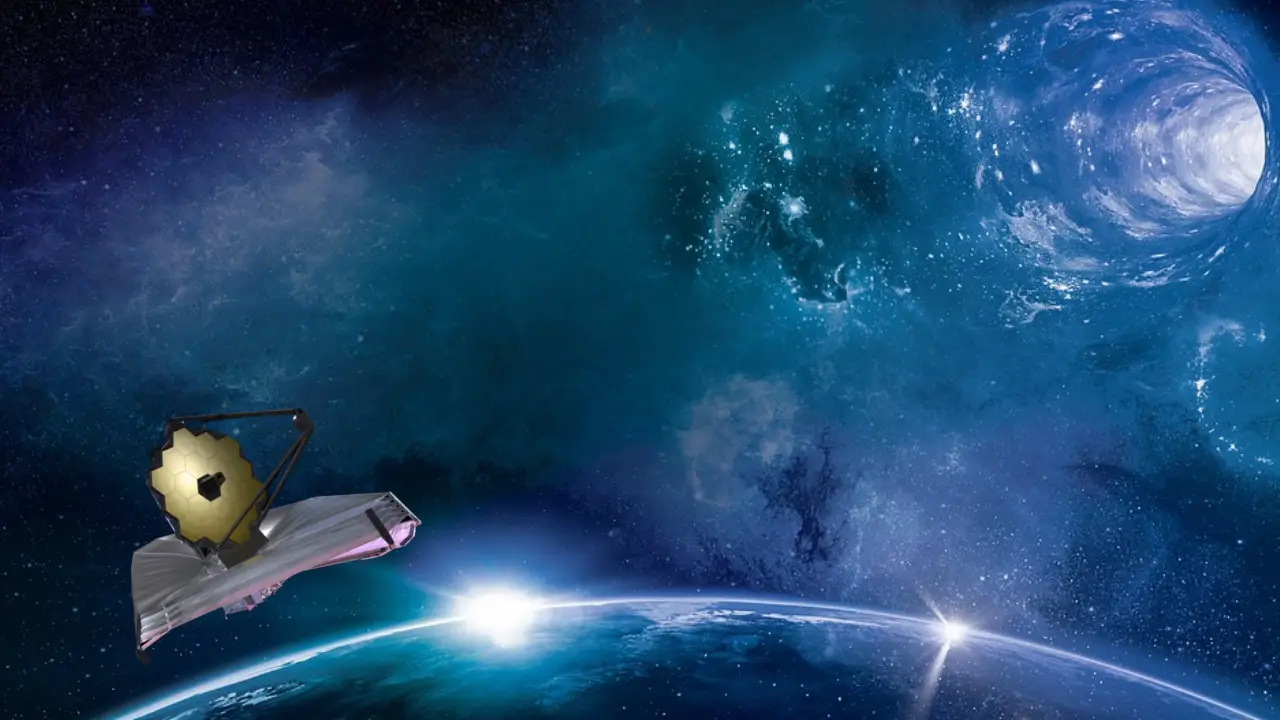For a very long time, scientists have been baffled by the puzzling nature of dark matter, which is a mysterious element that cannot be directly observed. On the other hand, thanks to a recent discovery made by NASA’s James Webb Space Telescope (JWST), we are one step closer to understanding the mysteries surrounding dark matter. New research that has been peer-reviewed has found that the James Webb Space Telescope (JWST) has found three candidates for dark stars. These stars are thought to be driven by particles of dark matter that are annihilating each other. This study has the potential to shed insight on the beginnings of light in the universe, providing an intriguing look into the cosmic web of dark matter in the process.
The Hidden Universe
The gravitational effects that dark matter has on visible matter have led scientists to believe that it does in fact exist, despite the fact that it is an invisible and enigmatic element. Finding direct evidence of dark matter has proven to be an extremely difficult task, despite the fact that its existence has been generally acknowledged. Traditional telescopes are only equipped to gather and examine electromagnetic radiation; as a result, they are unable to detect the presence of dark matter. Astronomers have consequently relied on indirect observations and theoretical models in order to gain a better understanding of this mysterious component of the universe.
Unveiling Dark Stars
Dark stars, as their name suggests, are celestial objects that may be fueled by particles of dark matter. However, very little is known about them. The findings of this research have the potential to contribute significantly to our understanding of where light in the universe comes from. The phrase “dark star” comes from the classic Grateful Dead song of the same name, which evokes a sense of mystique and interest. The term “dark star” itself comes from this song.
The JWST’s Observations
The James Webb Space Telescope, which is the successor to the Hubble Space Telescope, has ushered in a new era of cosmic exploration with its observations. Because of its extraordinary capabilities, scientists now have the ability to view old and faraway things with a level of detail never before possible. The James Webb Space Telescope (JWST) is continuing its mission to solve the mysteries of the universe by focusing its attention on the search for dark stars.
The JWST, through its painstaking investigations, has found three distant objects from the early stages of the cosmos that display the basic properties associated with dark stars. These objects date back to the beginning of the universe. The fact that these things produce a significant amount of light points to a power source that is distinct from traditional fusion processes. It is intriguing to note that their temperatures do not appear to be high enough for conventional fusion reactions to take place, which further strengthens the argument that dark matter is their source of energy.
Implications for Our Knowledge of the Universe
The possibility of the existence of dark stars has significant repercussions for our comprehension of how the universe has developed through time. These mysterious objects may be able to shed light on a pivotal stage in the evolution of the universe, during which it went from being a black and featureless expanse to a cosmos that was populated with bright structures. Astronomers may be able to acquire vital insights into the role that dark matter plays in forming the landscape of the cosmos through the study of the features and behaviour of dark stars.
Future Investigations
The JWST’s finding of candidate dark stars has opened up a wealth of fascinating new lines of inquiry, which will be carried out in the future. Now, astronomers and astrophysicists will dig further into the observations collected by the telescope in an effort to validate the nature of these objects and prove their link with dark matter. They will do this by examining the data more closely. In addition, ongoing research will attempt to improve theoretical models and investigate the ways in which our knowledge of particle physics and the larger cosmic framework may be altered as a result of probable ramifications.
The James Webb Space Telescope at NASA has made a remarkable discovery by discovering three possible dark stars, which sheds light on the previously enigmatic realm of dark matter. These bright objects, which are fueled by particles of dark matter, contradict our traditional view of the formation of stars and provide an intriguing insight into the early phases of the universe. As research into this exciting finding continues, it is possible that we are on the cusp of a paradigm shift in our understanding of the cosmos. This shift would involve the discovery of previously unknown linkages between dark matter, dark stars, and the radiant universe that we see today.
![]()
